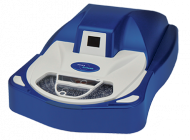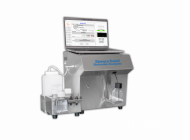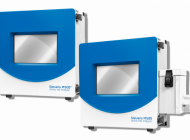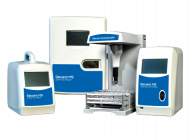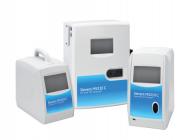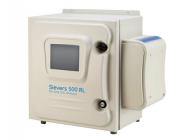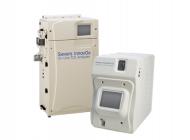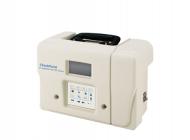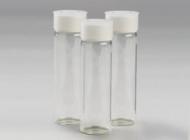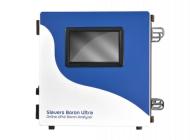Sievers Total Organic Carbon (TOC) Analyzers & Analytical Instruments
Unmatched analytical performance, reliability, and ease of use
Manufacturers need simpler and more efficient analytical testing solutions for quality control and process monitoring. Whether it's pharmaceutical or semiconductor production, industrial process, environmental, or wastewater monitoring- complex measurements need to be simplified, and compliance cannot be compromised.
As one of the world’s leading providers of total organic carbon (TOC) analyzers and analytical instruments, we believe in making complex measurements simple and offering superior technology, design, quality, and service.
Sievers Instruments simplify compendial water testing, process monitoring, and cleaning validation for manufacturers in various industries around the world. Complete solutions for TOC, conductivity, bacterial endotoxin testing (BET), and bioburden drive efficiency gains and enable real-time testing (RTT), automation, process control, and risk mitigation. Manufacturers rely on Sievers Instruments, software, consumables, services, and expertise, to make critical testing easier, more efficient, accurate, and compliant.
We have acquired more than 30 patents for water analyzing technical innovations— including the Sievers Membrane Conductometric Method and the Integrated Online Sampling (iOS) System. Sievers TOC Analyzers cover a dynamic analytical range from 0.03 ppb up to 50,000 ppm and provide solutions across diverse industries and applications.
Sievers Resource Center
Here is a collection of resources where you can easily find out about the latest industry trends, regulations, tips & tricks, and frequently asked questions about water quality analysis and process monitoring.
Learn how Veolia has helped businesses transition to real-time water quality testing using Sievers products.
Learn about the Sievers Complete Pharma Solution
-
What is TOC?
-
Total organic carbon, also referred to as TOC quantifies the amount of carbon present in organic compounds within pure water and aqueous solutions. This analytical technique holds significant value for organizations and laboratories, enabling them to assess the suitability of a solution for their specific processes. Unless subjected to rigorous purification processes, water will inherently contain trace amounts of organic compounds. Consequently, understanding the precise concentration of these compounds is crucial for ensuring the desired quality and performance of the solution.
Learn more about the basics of TOC here.
-
Where are TOC Analyzers used?
-
The monitoring of total organic carbon (TOC) is critical to the process monitoring of many industries. Sievers TOC analyzers can be used at-line, online, and in the lab for the monitoring of water and other materials in the following industries:
- Pharmaceutical & Biopharmaceutical
- Cosmetics/Personal Care
- Medical Device
- Drinking Water
- Environmental/Wastewater
- Chemical
- Microelectronics
- Power
- Food & Beverage
- And more
-
What is a TOC Analyzer's working principle of operation?
-
Total Organic Carbon (TOC) analyzers perform two functions: they oxidize the organic carbon in a sample to CO2 and measure the CO2 produced. What makes TOC analyzers different from other organic carbon detectors is the method they use to oxidize the organics and the methods used to detect the resulting CO2.
The three main methods of CO2 detection used commercially are:
- Non-dispersive infrared (NDIR)
- Direct Conductometric (Non-selective Conductometric)
- Membrane Conductometric Detection (Selective Conductometric)
NDIR TOC detectors measure CO2 in the gaseous phase, while conductometric TOC detectors measure CO2 in the liquid phase.
-
What does TOC measure?
-
Learn more about how TOC is measured, calculated, and analyzed here!
Total Organic Carbon (TOC) is an indirect measure of organic molecules present in a sample and measured as carbon. TOC measurement includes oxidizing organic carbon, detecting the oxidized carbon (often detected as CO2 by conductivity or NDIR), and expressing the result as carbon concentration.
-
How is TOC calculated?
-
TOC is calculated as the difference between total carbon (TC) and inorganic carbon (IC) in a sample.
TOC = TC-IC
This is often done by measuring total carbon, oxidizing organic carbon into CO2 and then detecting CO2 with conductivity or NDIR.
-
How does a TOC analyzer work?
-
TOC analyzers and sensors convert organic molecules to carbon dioxide (CO2) and they measure the CO2 that is produced to determine the TOC concentration. Different analyzers vary in the way that organics are converted to CO2, the way that CO2 is quantified, and the way that byproducts are managed.
Differences in TOC analyzers or sensors include:
- How the TOC technology converts or oxidizes organic carbon molecules to form CO2.
- How the TOC technology detects the CO2 produced. Common methods of detection are non-dispersive infrared (NDIR), direct conductometric (non-selective conductometric), and membrane conductometric (selective conductometric) detection.
- How the TOC technology deals with other ionic species that are produced after the organic molecule is oxidized.
-
How does Sievers membrane conductometric TOC technology work?
-
Sievers M9 and M5310 C TOC Analyzers use a UV-persulfate method to oxidize organic molecules to CO2, and a membrane conductometric method to quantify CO2. Sievers membrane conductometric technology separates the CO2 produced in the TOC analyzer from other byproducts of oxidation. The CO2 crosses a gas-permeable membrane while other ions (such as sulfates and chlorides, which are known to interfere with measurements and cause false high or false low TOC readings) are carried out to waste. Once the CO2 crosses the membrane, it equilibrates in the deionized water to form bicarbonate. This bicarbonate is then detected by a conductivity cell, with the increase in conductivity used to calculate the amount of carbon present.
-
Why do we measure TOC?
-
TOC is widely used to assess the purity of water in industries such as pharmaceuticals, microelectronics, municipal water treatment, and wastewater. In some industries, TOC is measured to comply with regulatory requirements. TOC can also be used for process understanding, cleaning validation and verification, leak detection, and other applications.
In municipal drinking water plants, TOC analysis is performed to ensure sufficient levels of TOC are removed from source water so that water is safe to drink. Organics monitoring is a valuable tool used in all stages of the water treatment process for treatment optimization, quality control, and regulatory compliance. Understanding and optimizing the various separation processes in drinking water treatment are important to detect changes in source water, reduce operating costs, and minimize the formation of disinfection byproducts (DBPs).
Microelectronics manufacturers monitor TOC in their process water, as TOC can cause imperfections in the way that silicon wafers and circuit boards are printed. This impacts the quality of their product.
Pharmaceutical manufacturers use TOC monitoring to measure purified water and water for injection (WFI) for compliance to USP <643>, EP 2.2.44, JP, IP, ChP and other harmonized compendia. For more robust monitoring programs, online technology is deployed to monitor water purification loops in real time for process control and immediate detection of out-of-specification (OOS) or out-of-trend (OOT) results. Immediate detection limits impact to critical equipment and in-process batches, saving time and reducing costs.
TOC is also a valuable tool for cleaning validation, verification, and monitoring. In cleaning validation, TOC is used to confirm removal of active pharmaceutical ingredient (API), detergents, cleaning agents, excipients, and degradants from equipment. This confirmation of cleanliness is used to release equipment without risk of carryover. Sievers TOC Analyzers can easily integrate directly online with a Clean-in-Place (CIP) skid to provide real-time, validated data with the highest degree of data integrity, process understanding, and process control. Sievers TOC Analyzers deliver results in compliance with 21 CFR Part 11 data management and data integrity guidelines.
The pharmaceutical industry demands lean processes and continuous improvement also known as “Quality by Design” (QbD). Having efficient processes allows for safe, high quality products to be available to patients when needed. The US FDA’s guidance document on Process Analytical Technology (PAT) not only describes how and when to deploy technology, it also strongly encourages manufacturers to embrace PAT within their systems. Total organic carbon (TOC) and conductivity monitoring are crucial aspects of purified water system quality and control. Real time data from process analytical technology ensures a controlled and well understood process while saving sampling and analysis time.
Sievers Analytical Instruments Brochure
This brochure provides an introduction to Sievers Analytical Instruments for water monitoring, process control, and compliance.
Sievers Resource Center Posts
Interested in Sievers products? Check out our Resource Center to get your questions answered about Sievers total organic carbon and bacterial endotoxin products.
Distillery Wastewater Monitoring
The importance of data when migrating to real-time testing
What are the benefits of following the carbon in your process water?

